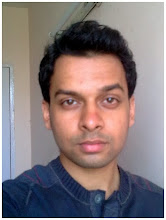How is a patent defined according to the Indian Patents Act, 1970? What are the inventions that are not patentable?
The Indian patents Act, 1970 is not only a complete Act but also in conformity with the TRIPS Agreement. It, however, needs enunciations in the form of judicial precedents as the same are lacking in case of patent law. It further must be analysed in the light of International developments in this field. The Indian Patent law must also be analysed in the light of both Public International law and the Private International Law as the same may create some problems in future. Further, the use of Information and Communication Technology.
There are some products and processes, which are not patentable in India as per Indian patent Law as described herein.
They are classified into two categories in the patent act
Various types of non-patentable inventions under Section 3 are as follows-
3(a) An invention which is frivolous or which claims anything obvious contrary to well established natural laws.
Merely making in one piece, articles, previously made in two or more pieces is frivolous. Mere usefulness is not sufficient (Indian vacuum brake co. ltd vs. Laurd (AUR 1962 CAK 152).
Perpetual motion machine alleged to be giving output without any input is not patentable as it is contrary to natural law.
3(b) An invention the primary or intended use or commercial exploitation of which could be contrary to public order or morality or which causes serious prejudice to human, animal or plant life or health or to the environment
There are some products and processes, which are not patentable in India as per Indian patent Law as described herein.
They are classified into two categories in the patent act
- Those which are not inventions (S.3)
- Invention relating to atomic Energy (S.4)
Various types of non-patentable inventions under Section 3 are as follows-
3(a) An invention which is frivolous or which claims anything obvious contrary to well established natural laws.
Merely making in one piece, articles, previously made in two or more pieces is frivolous. Mere usefulness is not sufficient (Indian vacuum brake co. ltd vs. Laurd (AUR 1962 CAK 152).
Perpetual motion machine alleged to be giving output without any input is not patentable as it is contrary to natural law.
3(b) An invention the primary or intended use or commercial exploitation of which could be contrary to public order or morality or which causes serious prejudice to human, animal or plant life or health or to the environment

Comments
Post a Comment